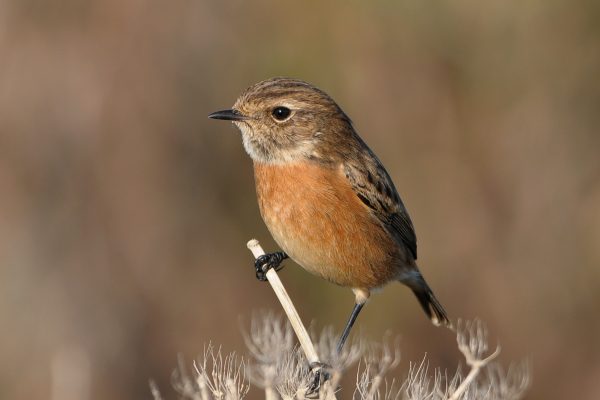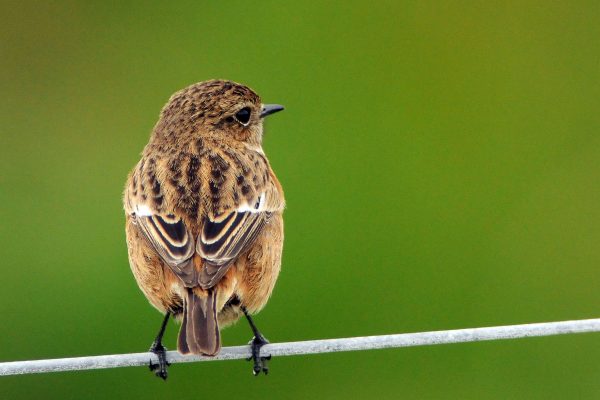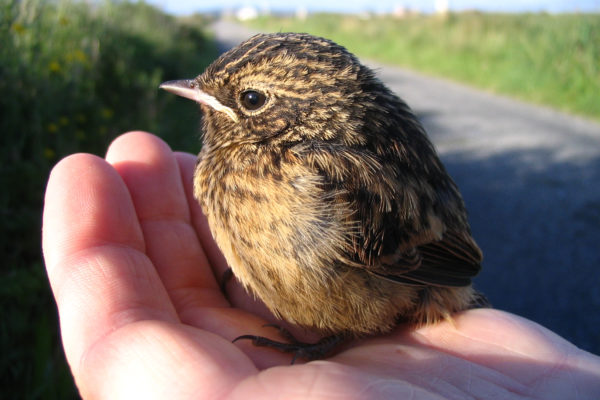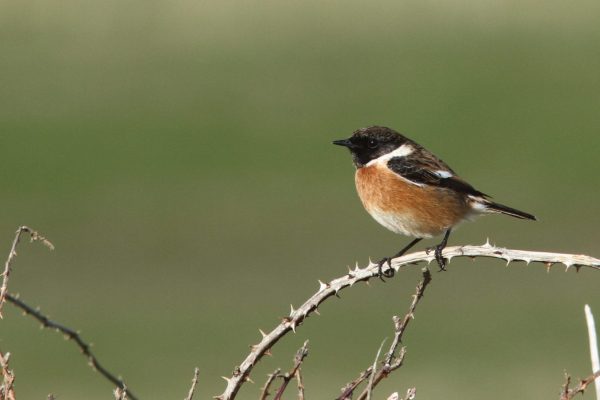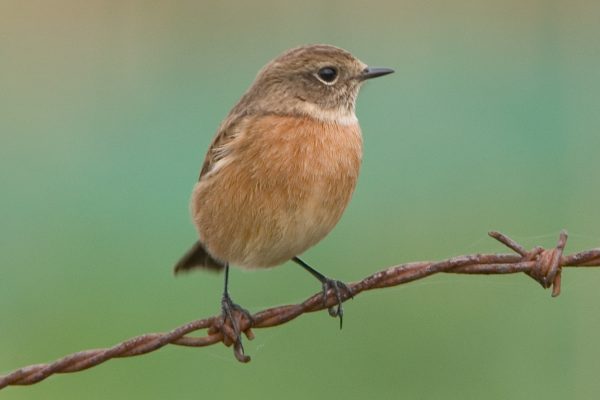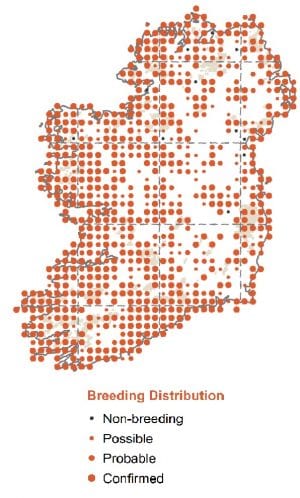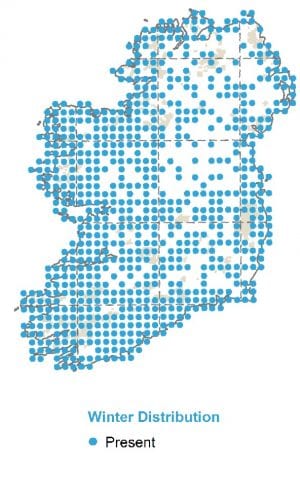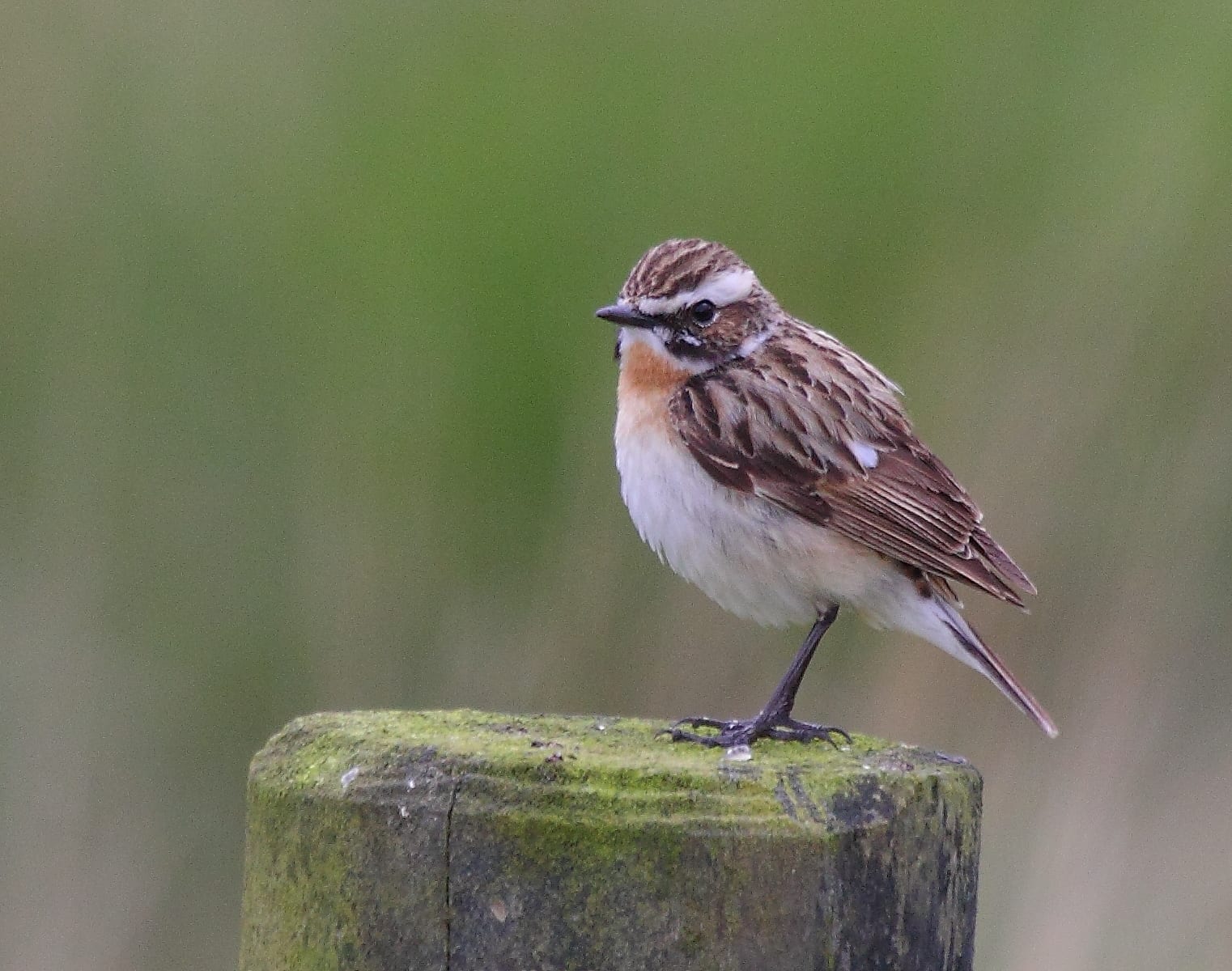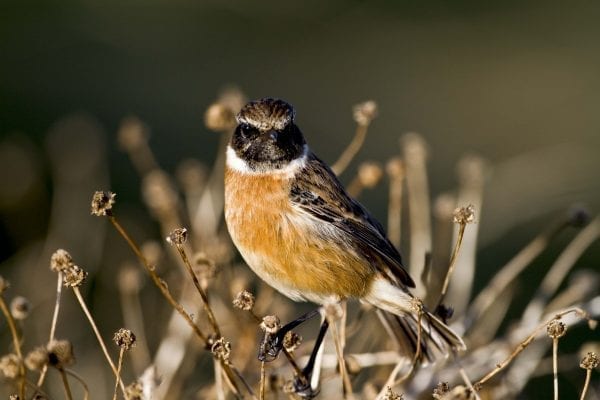
Stonechat
| Irish Name: | Caislín cloch |
| Scientific name: | Saxicola rubicola |
| Bird Family: | Chats |
green
Conservation status
Conservation status
Status
Widespread resident in scrubland throughout Ireland, mainly near the coast. Scarce in the midlands.
Identification
About the same size as a Robin. Frequently sits on exposed perches and so not difficult to observe. Adult male Stonechats have an all black head, with an obvious white collar on the neck. The underparts are a deep orange-brown, while the back and mantle are streaked brown and black. The rump is brown with black streaks. The tail is black. In flight, shows a small white patch at the base of the wing. Rarely, male Stonechats have a thin white supercilium, though never as extensive as on a Whinchat. Adult females are similar to male Stonechats, but have the black on the head and back replaced with dark brown. Juveniles are rather grey with with fine black streaking all over. First-winter Stonechats appear like a pale version of the adult female, the head being beige-brown.
Voice
Rather vocal. Most frequently heard is a "vish-track-track". The song is a quiet scratchy warble, similar to the song of Common Whitethroat.
Diet
Insects. Caught after a short flight from a perch.
Breeding
Breeds in scrubby areas, frequently with at least some Gorse present. Alsoi in bracken in uplands. In Ireland, commonest in coastal areas and rather localised in the Midlands.
Wintering
Mainly sedentary in the lowlands. Stonechats breeding in uplands moving to lower altitudes in autumn.

